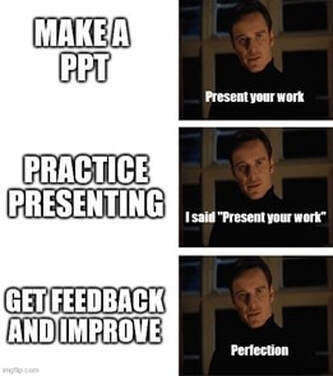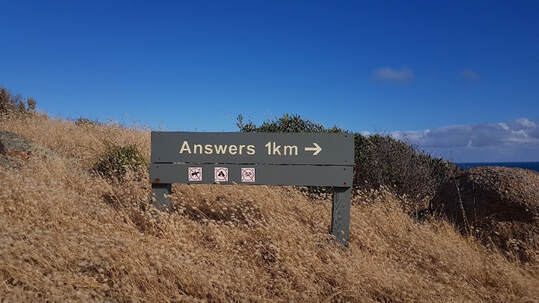|
By Kadambari Vijay Sai Have you ever felt yourself dozing off or zoning out in a zoom presentation despite your best intentions? How can you prevent this in others when you’re leading a presentation through Zoom? “Tell me and I forget, teach me and I may remember, involve me and I learn.” These words, which likely originate from an old Chinese proverb, stand the test of time as the holy grail for a good Zoom presentation. The social constraints that compel an audience to stay focused during an in-person presentation are absent on Zoom. This leaves viewers at the mercy of their willpower, which is often weaker than their won’t-power – making it incredibly hard to focus. So, it’s up to the presenter to engage and involve the audience. How do you engage your audience? An in-person presentation and virtual presentation can be compared to a theatre production and a movie, respectively. If you’re an actor in a theatre production, you can see and feel the response of your audience, which allows you to adapt your performance to changes in their mood. However, if you’re an actor in a movie, you cannot see the reaction of your audience or adapt your performance accordingly – a movie is produced ahead of time. So, besides rehearsing, you also have to put work into anticipating your audience’s needs and preparing a performance that is engaging enough to capture and retain their interest. Engaging your audience in a Zoom presentation is also a game of story and screenplay, where you either win or are left talking to yourself. This is more than just asking questions. It’s about making your audience want to answer and ask questions and thus, actually engage you, the presenter. Let’s dive into some tips to improve audience engagement. Bring out your inner scout – be prepared One of the most critical aspects for a successful presentation is being prepared. This is for both your slides and your actual presentation of the slides. For this, you need to know your subject and those you will be subjecting to the talk. You can ask people you know will be in your audience what they hope to gain from the talk ahead of time, either at the time of registration for a conference or after you receive the assignment for a course. This lends your “movie” a theatre production-like effect, from the previous analogy. Understanding what the audience is most interested in learning or where they want more information can help you plan where to focus your time – or even when you should pause for dramatic effect. During a live zoom presentation, even if you can’t see the audience’s face, you can ask them to share their expectations by unmuting themselves or typing in the chat box. Audience participation at the beginning is especially useful for waking up your viewers if you’re scheduled in the middle, or towards the end, of several presentations in a row. But what do you do about those audience members who don’t know what they expect, are there for something different or have no idea what you’re talking about? This is where our story and screenplay come into focus. You must keep your audience engaged right from the start of the presentation. To practice your presentation, try presenting to a friend or family member, or even record your presentation to see where you could improve. Notice where you sound comfortable or uncomfortable, and use that to practice and improve your slides or explanation. If you hate listening to the sound of your own voice, you can also start off by using free software to transcribe the audio. You won’t be able to hear your tone, but you can look at the time stamps to gauge your speed, see if you’re over or under your time limit, and where you tend to say too many “ums” or “ahs.” Practising your presentation helps you view your work critically and improve it to suit the attention span of your audience. Credit: Kadambari Vijay Sai Unlike with the cat, curiosity does not kill the audience; boredom does Humans are naturally curious and the best time to tap into their curiosity is right at the beginning of your presentation. To keep your audience engaged from the start, this blog on Visme provides wonderful different strategies that appeal to different speakers’ styles and strengths. One suggestion is to provide shocking statistics, anecdotes and quotes, to strike a chord with the audience. But once you’ve got their attention, how do you keep it? This is where you act on Albert Einstein’s words, “If you can't explain it to a six-year-old, you don't understand it yourself.” The key is to introduce the background of your talk in such simple terms that even a 6-year-old could understand. While you present, you could also keep your video on and look at the camera since this can help the audience connect with you as if it were an in-person presentation. If you need cue cards to help with your dialogue, keeping post-it notes near your camera can help you maintain eye contact. Once you’ve gotten through the background, keep to a story-like format, as much as the topic and content permits. We are naturally drawn to listening to stories. Once you’re in that format, the audience cannot help but ask “What’s next?” This curiosity will drive them to listen to you, absorb your words, assimilate it and engage with you. Visual aids, like images, graphs, cartoons, videos, and other such media, are also a great tool to walk the audience through the story that you’re telling them. It can be helpful to alternate between a few of these to bring variety to your presentation. It also helps to reduce the amount of text you’ve got on the slide and create negative space wherever possible so that your viewers are not overwhelmed by listening to you and reading your slides at the same time. It is generally easier to focus (or re-focus) on a presentation when the speaker draws things on the slide or when they walk the audience through explanations of these images to demonstrate a point. Using a laser pointer or using visual effects to highlight or grey out different parts of your slide as you talk about them may additionally help keep the audience focused on the important things in a slide at any given time. The goal of your presentation is to make the audience go the extra mile and engage with you to get the answers they seek Credit: Hadija Saidi, from Unsplash You’ve unlocked a secret level!
Now that you have some tips to make your Zoom presentation engaging, put your best foot forward to prepare for the presentation. After putting together these suggestions, your confidence in yourself and your knowledge of the topic are the final touches that will make your presentation the best it could be! Kadambari Vijay SaiKadambari is a final year student of B. Tech Biotechnology at Anna University, Chennai, India. She firmly believes there are no stupid questions in science. As a result, she’s passionate about science communication and outreach, and hopes that everyone asks the silly questions to which they hope to find answers! Apart from this, she enjoys painting, doodling, editing, and exploring new places.
0 Comments
Leave a Reply. |
The Scientista Foundation, Inc. All Rights Reserved © 2011-2021 | Based in NY | [email protected]
The Network for Pre-Professional Women in Science and Engineering
The Scientista Foundation is a registered 501(c)(3) -- Donate!
The Network for Pre-Professional Women in Science and Engineering
The Scientista Foundation is a registered 501(c)(3) -- Donate!



